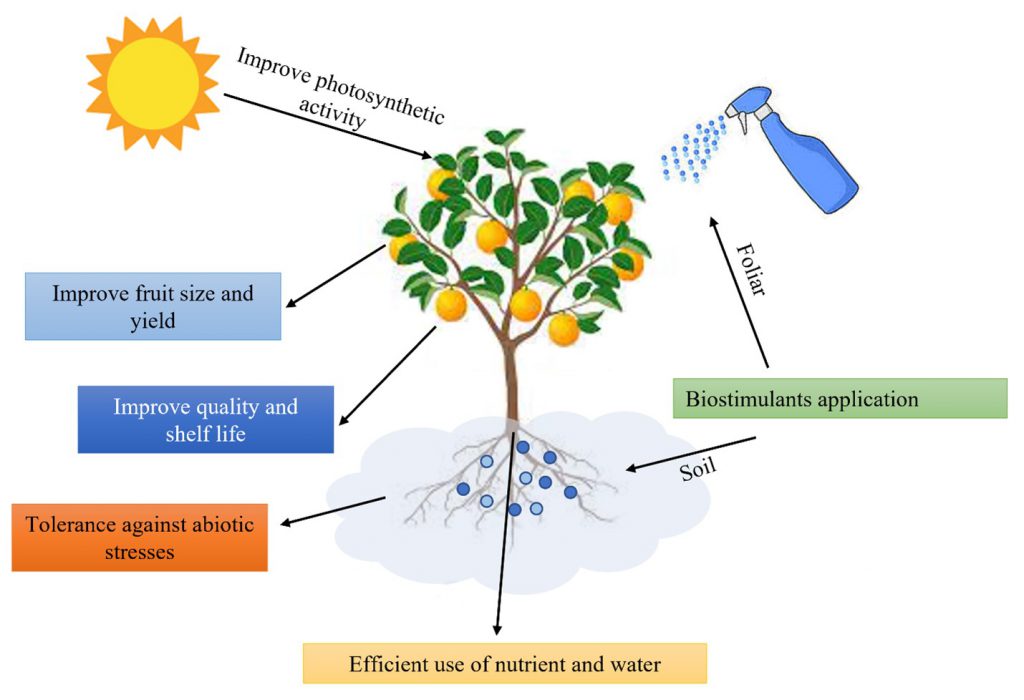Written by: Muhammad Adnan Shahid and Shahid Iqbal.
UF/IFAS Horticultural Sciences Department, North Florida Research and Education Center, Quincy FL
Biostimulants are a type of substance or microorganism applied to plants to improve their nutrient efficiency and resistance against abiotic stress (salinity, cold, heat, UV, flooding, drought, heavy metal toxicity, nutrient deficiency), diseases, and quality traits. Due to the increase in world population, the growing pressure on crop productivity is a demanding challenge; therefore, it is necessary to reduce the use of agrochemicals with negative impacts on human health and the environment. Thus, new strategies from the bio-based industry must be found and adopted. Citrus is a highly desirable and profitable fruit crop with undesirable characteristics like excessive flowering and physiological fruit disorder that negatively affect the market value.
Biostimulant Types and Practical Application
Many crop growers have expressed an interest in biostimulants in recent years. As these products gain popularity, we have found that there’s still a lot of controversy about their efficacy. Before determining whether Extension endorses them, let’s review the various types and their practical usage.
Several types of biostimulants include humic and fulvic acid, seaweed extracts, protein hydrolysates, chitosan, beneficial bacteria, fungi and microbial inoculants, and other types of amino acids and polyamines. These products are commercially available with different formulations and ingredients and have immense potential in horticultural crop production, especially in citrus.
Plant biostimulants can be applied through foliar application, fertigation, or directly through the soil, enhancing crop growth and quality. Biostimulants could reduce plant environmental threats and minimize the negative consequences of unsystematic chemical application.
Benefits of Using Biostimulants in Citrus Crop Production
Biostimulant products improve plants’ overall health and help maximize fruit production and quality by providing complete nutrition. The benefits of using biostimulants are highlighted below.
- Improve plant metabolism to induce high-yield and quality.
- Enhance soil fertility by fostering complementary soil microorganisms.
- Increase tolerance against abiotic stresses.
- Facilitate nutrients and their movement inside the plant vessels
- Boost fruit quality attributes like color, sugar content, etc.

Concluding remarks and recommendations
Biostimulants are in the frontline as a novel strategy to achieve the goal of sustainable citrus crop production, yield, and superior quality. Proper management practices are important for high-yield and quality fruit in citrus production. The use of biostimulant products can provide producers with sustainable production. Before using these products, contact a regional extension specialist or citrus expert for their proper application and trail setup. The Fruit Physiology Lab at North Florida Research and Education Centre (NFREC), Quincy, Florida has started a research project on determining the efficacy and efficiency of different microbial and non-microbial biostimulants in cold hardy citrus production, to improve yield, and fruit quality. For any further information on the use of biostimulants please contact Dr. Muhammad Shahid, Fruit Physiologist/Assistant Professor of Horticulture at mshahid@ufl.edu.
